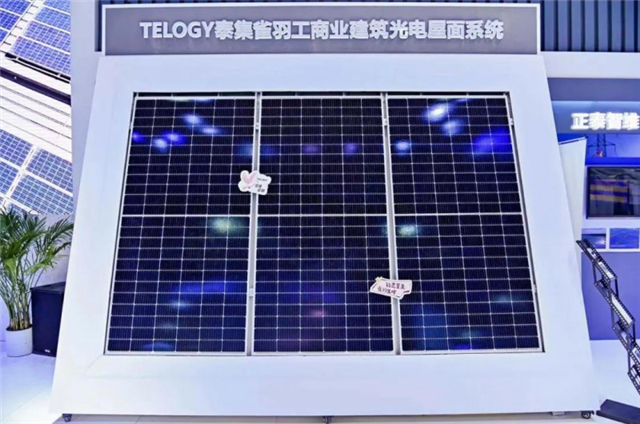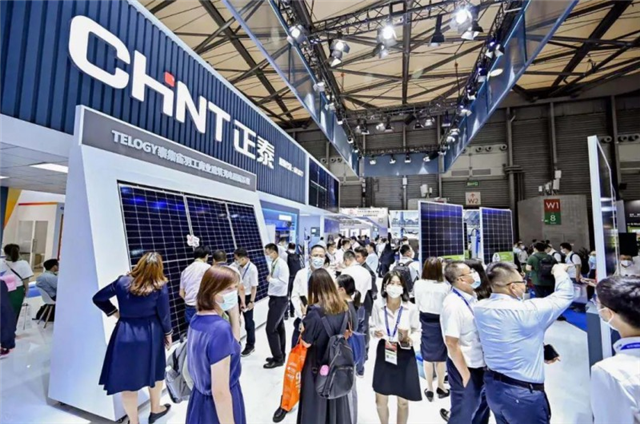N-type, high power, BIPV and energy storage are the four keywords surrounding SNEC this year. According to incomplete statistics, more than 20 PV enterprises presented BIPV products, including rooftop solutions and wall-mounted solar panels, etc.
Why are leading PV enterprises so keen on developing BIPV products? Solarbe believes these could be the reasons.
Construction industry in central and eastern China pressured to meet the dual carbon goals
The construction of utility-scale power plants requires vast land resources, which is what central and eastern regions in China lacks. To achieve carbon neutrality and carbon emission peak, rooftop PV installation is undoubtedly the easiest way to reduce carbon emissions. In addition, compared with utility-scale power plants, BIPV projects are closer to power consumers, which makes it easier to understand true market demand and guarantee consumption. If it is equipped with energy storage system, self-sufficiency of electricity would become possible.
In fact, the construction industry are willing to incorporate solar PV systems. Experts claim that the construction industry is one of the main sources of carbon emissions in China. Statistics suggest that the carbon emissions generated in the whole life cycle of buildings account for more than a third of the total carbon emissions of the country. Reducing carbon emissions from buildings will be an important method to achieve carbon neutrality and conserve energy.

Zhou Chengjun, Vice President of Chint Solar, believes that BIPV is one of the most effective solutions to build green buildings. As China is moving towards carbon neutrality, the market prospect of BIPV is huge. With the introduction of new technologies, the efficiency of cells and modules is increasing, while and the LCOE of solar PV is decreasing, which further promotes the outburst of the BIPV market.
Massive market demand
Data shows that the market demand for BIPV in China exceeds 2.3 trillion yuan, and over 200 billion yuan will be added annually. Even if BIPV only accounts for half of the market demand, it still exceeds one trillion yuan, with an annual increase of over one hundred billion yuan. It is undoubtedly a huge market.
In the past decade, the price and LCOE of PV system have been reduced by more than 90%. In some areas, the on-grid electricity price can be lower than that of thermal power, making solar PV the most economical source of energy. We also noticed that most rooftop PV systems at present are attached to buildings. However, with technological advancement, we have transformed from “rooftop solar” to “solar rooftop”.
Of course, BIPV is more than just saving electricity. Zhang Fang, Director of BIPV Application Committee of China Building Metal Structure Association, previously mentioned that it is a trend for PV modules to become a part of building materials. BIPV should generate power on the basis of meeting customer demands. “For BIPV market, we cannot analyze it based on the utility-scale mindset. Instead, we should locate the demands and create a BIPV market in combination with solar PV. “
BIPV products are becoming more reliable
Last year, the BIPV Professional Committee of China Photovoltaic Industry Association was officially established with Chint Solar as Vice Chair. At SNEC 2021, Chint’s BIPV system Telogy made its debut. Zhou Chengjun said that it is a BIPV product Chint has especially designed for C&I applications. It can be perfectly integrated with C&I rooftops.

Zhou Chengjun concluded that Chint, as one of the earliest enterprises engaged in industrial and commercial distributed business in China, has accumulated rich experience in product design, project development, standard preparation, financial services, etc. In the future, the company will continue to innovate and develop more BIPV products similar to Telogy to help realize the dual carbon goals.


